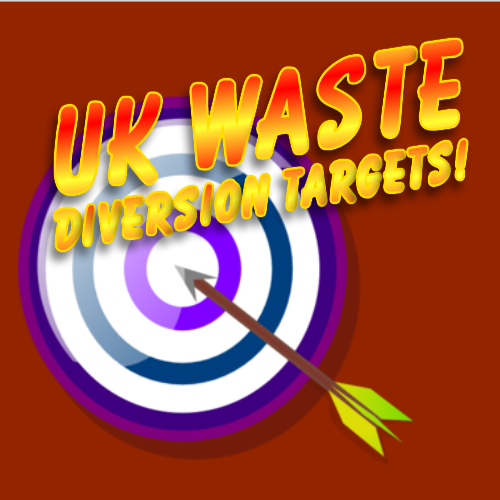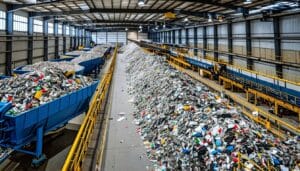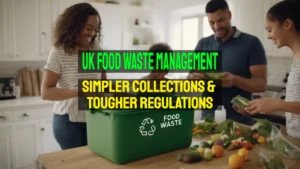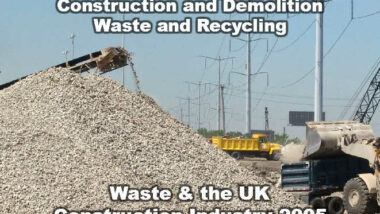 Local authorities across England have been set limits on the amount of biodegradable municipal waste they can dispose of in landfill sites. The aim of these waste diversion targets is to achieve the diversion of waste away from landfill sites.
Local authorities across England have been set limits on the amount of biodegradable municipal waste they can dispose of in landfill sites. The aim of these waste diversion targets is to achieve the diversion of waste away from landfill sites.
Environment Minister Elliot Morley confirmed (3 February 2005) the final allocation of landfill allowances for England's 121 waste disposal authorities which have been current in the absence of a clear revision to date (Autumn 2014). Allocations have been set in advance of the launch of the Landfill Allowance Trading Scheme (LATS) on 1 April 2005.
Mr Morley said:
“Government will be introducing the scheme to help local authorities meet the tough new [waste diversion] targets under the EU Landfill Directive, to reduce the amount of biodegradable municipal waste going to landfill sites, in the most cost effective way. “While the targets are challenging, this is an innovative approach which gives authorities the flexibility to decide how and when to make the necessary changes in the way they handle their waste, while ensuring that England meets national and international obligations in the most cost effective way,” he explained. (Environment Minister Elliot Morley)
As such, waste disposal authorities have been able to trade their allowances with other disposal authorities; selling allowances if their waste has already been diverted to other disposal routes – for example recycling – or buying allowances if they have no alternative but to landfill more waste than their allocation of allowances enables them to. [Until government abolition of LATS which has occurred (Updated Autumn 2014)]
There will also be the chance to ‘bank' for those who want to save unused allowances or ‘borrow' for those that want to bring forward part of their future allocation.
Mr Morley added:
“Combined with existing waste targets, this scheme will encourage the move away from landfill and towards more sustainable waste management practices.”
The diversion of biodegradable municipal waste from landfill is a key objective under the EU Landfill Directive. One tonne of biodegradable waste – such as paper, card, textiles, kitchen and garden waste – produces between 200 and 400m3 of landfill gas. Landfills released 25% of the UK's methane emissions in 2001, which represents 2% of the world's total greenhouse gas emissions.
In the United Kingdom, by 2010, biodegradable municipal waste going to landfill must be 75% of the amount produced in 1995; by 2013 this is reduced to 50% and by 2020 to 35%.
The scheme should benefit councils such as Isle of Wight District Council, Windsor and Maidenhead Borough Council and Dorset County Council who have all taken the lead in by collecting, composting and recycling over a quarter of household waste produced in their area during 2002/03.
To assist local authorities in planning to meet their reduction [waste diversion] targets, Defra has also launched an electronic planning tool which will help local authorities to integrate LATS with their waste strategy and enable them to make the most effective use of the flexibilities provided within the scheme.
The tool (known as M-BEAM) will be published shortly on the Waste Implementation Programme (WIP), Local Authority Support Unit (LASU) website at http://lasupport.defra.gov.uk
NOTES
Article 5(2) of the EC Directive [1999/31/EC] on the landfill of waste requires the UK:
- by 2006 to reduce the amount of BMW going to landfill to 75% of that produced in 1995;
- by 2009 to reduce the amount of BMW going to landfill to 50% of that produced in 1995;
- by 2016 to reduce the amount of BMW going to landfill to 35% of that produced in 1995.
The Directive allows member states which landfilled over 80% of their municipal waste in 1995 to postpone the targets by up to four years. The Government intends to use this four year derogation, making the target dates for the UK 2010, 2013 and 2020.
The allowances are allocated under the Waste and Emissions Trading Act at a level that will enable England to meet its obligations, as a contribution to the UK Landfill Directive targets.
Revolutionizing Waste Recovery: Latest Separation And Sorting Innovations
Waste recovery is changing fast, thanks to new separation and sorting technology. This tech helps us sort trash better, so we can recycle more things. For example, Stadler has built a big plant in Spain for VAERSA that makes recycling easier and smarter. Keson is finding new ways to deal with old tyres, helping both […]
Top 10 UK Solid Waste Management Companies 2025
The UK waste management sector stands as a vital industry worth billions of pounds. The top UK Solid Waste Management Companies are the leading waste management firms in Britain. These companies handle millions of tonnes of rubbish each year. The industry has transformed significantly over the past two decades through strategic mergers and environmental innovations. […]
Ramp Method of Waste Disposal – Landfill Guide & Techniques
The ramp method optimizes landfill operations by creating an inclined surface, allowing efficient waste compaction and daily cover application. Unlike traditional methods, it requires minimal excavation, reducing costs and extending landfill lifespan. Proper implementation and equipment maintenance are key to effective ramp method performance in various terrains…
The Future of UK Food Waste Management – Simpler Collections and Tougher Regulation
The future of UK food waste management will be a big push toward higher recycling rates through simpler collection and far greater consistency across the nations, helping citizens understand how to be green and recycle more organic waste. As the UK continues to advance its environmental goals, recently announced government policies aimed at simplifying waste […]









